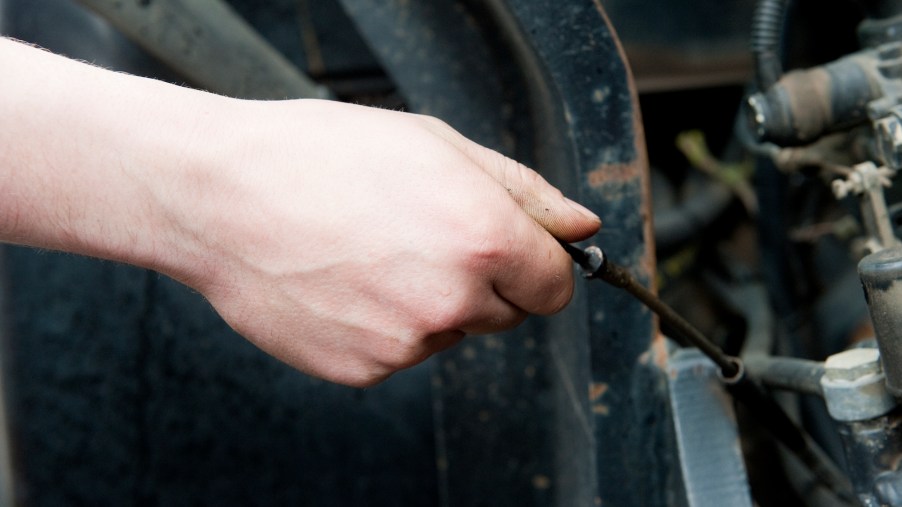
The Dangers of Putting Too Much Oil in Your Car
Your gas-powered vehicle uses an engine with tons of moving parts. To keep this expensive unit running, you need to change the oil every few thousand miles, whether you do it yourself or have someone else perform the maintenance. If you don’t, you run the risk of ruining the motor. And replacing it isn’t cheap.
J.D. Power stresses the importance of oil in your engine. If your motor doesn’t have enough oil, the engine will run rough. But having too much oil will also wreak havoc on your motor. Here’s what you need to know about engine oil and what to do if there’s too much in your engine.
Why do engines need oil?
Engine oil performs a few different jobs. The first task is to keep the engine parts well lubricated to prevent too much friction from forming. Friction can damage the motor’s internal pieces and wear it out faster.
Oil also keeps your engine free of debris, provided you replace it with fresh oil regularly. The oil circulates throughout the motor and carries any dirt or grime to the oil filter, which traps debris and prevents it from recycling through the engine.
Plus, oil keeps your engine cool so that it doesn’t overheat. If an engine overheats, it will probably quit running. Then you’ll have to replace it at an enormous cost. Engines aren’t cheap, and neither is the labor to install them.
Can you put too much oil in your engine?
The answer is a resounding yes. Manufacturers recommend the type of oil to use, when to change it, and how much to put in. There’s a reason for that last part: The wrong amount, whether too little or too much, will damage your engine.
Too much oil in the pan and the crankshaft will cause air to mix with the oil. This will give you a frothy, cream-like mixture that won’t properly lubricate the moving parts. The frothiness will cause friction, and then you’re headed for an expensive repair bill.
Also, adding too much oil will cause it to gather in the cylinder chambers, which will increase pressure. That pressure has to find relief somewhere, so it will escape in some of the most vulnerable areas, such as gaskets and rings, causing even more damage.
What to do when there’s too much
If you change your own oil or if a mechanic does it for you, be sure the oil is at the proper level. You can tell by using the engine’s dipstick. An indicator at the bottom of the dipstick shows you whether the oil is in the safe zone or there’s too little or too much.
If there’s too little, add a small amount of oil at a time until it reaches the right spot on the dipstick.
If there’s too much, you can remedy the problem a couple of ways. You can siphon the oil using a special tool inserted into the crankcase. But the recommended method is to remove the oil from the pan underneath the car and start over. Siphoning is easier, but it doesn’t always give you an accurate reading. By changing the oil again, you’ll get a better picture of how much is really in the pan.
It’s best to check your car’s oil periodically to ensure it always contains the proper amount. It should never have too little or too much. Performing regular maintenance can save your motor from an early demise and save you a ton of money.


